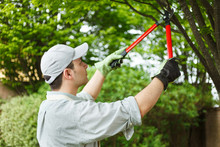Master the Art of Pruning Fruit Trees, Top Techniques

Master the Art of Pruning Fruit Trees: Top Techniques and Best Practices
Pruning fruit trees is an essential practice for maintaining their health and promoting fruit production. Here are some top techniques and best practices to help you master the art of pruning.
Understanding Pruning Methods
Pruning is the process of removing dead, diseased, or damaged branches from a tree. It also involves shaping the tree to allow for better light penetration and air circulation. The three main pruning methods are thinning, heading, and renewal pruning.
The Importance of Tree Health
Regular pruning can significantly improve the health of your fruit trees. It can help prevent diseases by removing infected branches and allowing air to circulate more freely. It also encourages new growth, which can rejuvenate older trees.
Enhancing Fruit Production
Pruning can also increase the yield of your fruit trees. By removing excess branches, you can direct more of the tree's energy into fruit production. This can result in larger, healthier fruits.
When to Prune Fruit Trees
The best time to prune fruit trees depends on the type of tree. Most fruit trees should be pruned in the dormant season, typically during late winter or early spring. However, some trees, like stone fruits, should be pruned immediately after fruiting.
Branch Cutting Techniques
When cutting branches, always make your cuts just outside the branch collar. This is the swollen area where the branch meets the trunk. Avoid leaving a stub or cutting into the trunk, as this can damage the tree.
Maintaining Fruit Tree Shape
Pruning can also help maintain the shape of your fruit trees. This is especially important for trees grown in formal orchards. A well-shaped tree is easier to manage and can produce more fruit.
Pruning Tools
Having the right tools is essential for successful pruning. Hand pruners are ideal for small branches, while loppers and saws are better for larger branches. Always keep your tools clean and sharp to make clean cuts and avoid damaging the tree.
Learn More About Pruning
For more detailed information on pruning fruit trees, check out this guide from the Royal Horticultural Society.
Conclusion
Pruning fruit trees may seem daunting at first, but with the right techniques and best practices, it can become a rewarding part of your gardening routine. Regular pruning can improve tree health, increase fruit production, and maintain the shape of your trees. So why wait? Grab your pruning tools and get started today!
FAQs
-
Can I prune my fruit trees in the summer?
- While most fruit trees should be pruned in the dormant season, some light summer pruning can be beneficial for certain types of trees.
-
What should I do if I accidentally cut a branch too short?
- If you've cut a branch too short, try not to worry. The tree will eventually heal, but it may take some time.
-
Do I need to use a special pruning sealer?
- In most cases, pruning sealer is not necessary. Modern pruning techniques promote quick healing without the need for sealers.
-
How often should I prune my fruit trees?
- The frequency of pruning depends on the age and type of tree. Young trees may need more frequent pruning to establish their structure, while mature trees may only need annual pruning.
-
What should I do if I find a diseased branch?
- If you find a diseased branch, it's important to remove it as soon as possible to prevent the disease from spreading. Always disinfect your pruning tools between cuts to avoid further contamination.
0 Response to " Master the Art of Pruning Fruit Trees, Top Techniques"
Post a Comment